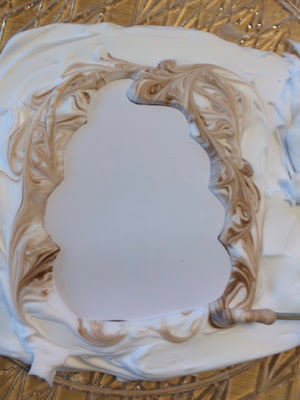Using a simple paper plate loom students can create their own woven tree.
I was inspired by this pin on pinterest:
I changed it a bit and came up with this.
You'll need:
Yarn
Scissors
7" paper plates
Beads and bells if wanted
Using this template I cut notches in the sides of the plates.
Then I used approximately 3 yards of yarn and folded it in half.
I put the folded end under the 2 notches on one side of the plate.
Next I put one side of the yarn through a notch on the right top and another side of the yarn through the notch on the left top.
I kept the yarn separate and kept on looping it into the notches on each side. The yarn goes underneath the plate through the bottom notch again and back up to the top notch over and over.
The back of the plate.
Bring the two strings up to the 2 notches and cross them over each other.
Criss cross the yarn over the top and under the yarn two times and then pull the strings tight.
Now tie a knot with the strings to keep the top of the tree tight.
Tie another knot in the two strings up higher to create a hanger.
Now you're ready to begin weaving.
This is called the warp on the loom. The yarn we weave with is called the weft.
I pre made my looms since I am doing this with 1st grade students.
Tie a piece of yarn to the outside string of yarn and weave it over and under each strand of yarn.
I start over the first strand and then alternate. You always have to do the opposite of what you just did - over and then under - over then under.
You can weave it into the wider strings toward the bottom, which is easier, and then pull it to the top and snug it up.
I am using shorter lengths of yarn, maybe a yard at a time to make it easier. When I get to the end I tie another strand on with a knot and keep going. If you want to put beads on just thread them onto the yarn.
When you get to the end simply tie the yarn onto the outside string.
This is a simple weaving activity where students will see the results of their effort quickly. It will be confusing for some at first, but when they stick with it and master it they will be so proud of themselves!
My 1st Grade student's work:
























































